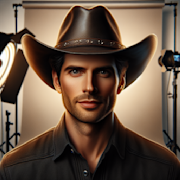Classics in Color: The Impact of Technicolor on Cinematic Aesthetics

In the world of film, color has the power to transform the way we perceive a story. From the golden age of Hollywood to modern day blockbusters, the use of color has played a significant role in shaping the aesthetics of cinema. One of the most influential developments in the history of color cinematography was the introduction of Technicolor.
The Evolution of Technicolor
Technicolor was a groundbreaking color film process that revolutionized the way movies were made. Developed in the early 20th century, Technicolor offered filmmakers a way to capture vibrant, lifelike hues on screen. The process involved using a special camera and a complex dye transfer printing technique to create rich, saturated colors that were far superior to anything that had been seen before.
The first feature film to be shot entirely in Technicolor was “Becky Sharp” in 1935, and it quickly became the go-to choice for filmmakers looking to make a visual impact. Some of the most iconic films of the era, such as “Gone With The Wind” and “The Wizard of Oz,” were shot in Technicolor, solidifying its place in cinematic history.
The Aesthetic Impact of Technicolor
The introduction of Technicolor had a profound effect on the way movies were perceived by audiences. The vibrant colors brought a new level of realism to the screen, immersing viewers in the world of the film in a way that black and white film simply could not match. Directors and cinematographers quickly embraced the new technology, using color to enhance the mood and tone of their films.
One of the most striking aspects of Technicolor was its ability to evoke emotion through color. For example, in “The Wizard of Oz,” the shift from black and white to color as Dorothy enters the land of Oz is a powerful visual metaphor for her journey from a dull, monotonous world to one filled with magic and wonder. The use of Technicolor in this way helped to elevate the film from a simple children’s story to a timeless classic.
Technicolor: A Legacy in Filmmaking
While the popularity of Technicolor eventually waned as new, more cost-effective color processes were developed, its impact on cinematic aesthetics can still be felt today. The legacy of Technicolor lives on in the work of filmmakers who continue to push the boundaries of color in film.
Directors like Martin Scorsese and Wes Anderson are known for their meticulous attention to color palette, using it to create visual motifs and enhance the emotional impact of their stories. The influence of Technicolor can be seen in films like “The Grand Budapest Hotel,” with its vibrant, pastel-colored sets, and “The Aviator,” which uses color to evoke different time periods in the life of Howard Hughes.
Conclusion
Technicolor may no longer be the dominant color process in Hollywood, but its impact on cinematic aesthetics is undeniable. The vibrant colors and lifelike hues made possible by Technicolor have shaped the way we perceive and experience film, enhancing the visual storytelling and creating a lasting legacy in the world of cinema. As technology continues to evolve, it will be exciting to see how filmmakers continue to innovate and push the boundaries of color in film.

Alberto Miller
Movie Fanatic
More From Classics Authority Movies

Movie
From Page to Screen: Classic Adaptations That Transcend Time

Movie
The Usual Suspects (1995)

Movie
The Femme Fatale in Technicolor: Exploring Vibrant Characters in Classic Film

Movie
Cinematic Soundscapes: The Role of Music in Classic Movie Atmosphere

Movie
Star Wars: Episode V - The Empire Strikes Back (1980)

Movie
Fargo (1996)





